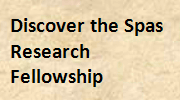 |
|||
|
|
|||
|
||||||||||||||||||||||||||||
|
P R O F I L E |
||||||||||||||||||||||||||||
|
 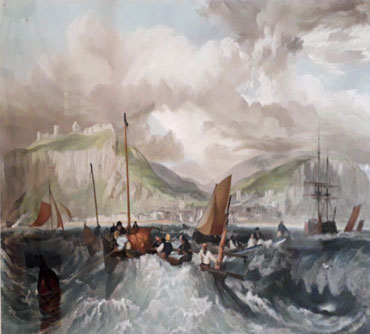 William Henry Stanton
William Henry StantonDeal Kent Great Britain Clues to William H Stanton's interests and family background can be gleaned from his book. He was born in 1803 and died in 1867. His adventures include shipwrecking and rescue along the Kent and Sussex coast, particularly ships stranded on the Goodwin Sands. Such a rescue entitled the rescuer to a share of the value of the cargo. Right: Recovering salvage off Hastings. William H Stanton's father's surname was Stanton and he appears to have married his mother, a lady called Mary circa 1800. W H Stanton's father was imprisoned as a smuggler circa 1817. It is thought that W H Stanton's mother Mary was Mary Baker born 1777 from the Baker family located around Rodmell and Piddinghoe, East Sussex. W H Stanton refers to Uncle Baker (page 60) and William Baker his cousin (page 56). The Baker family had a reputation for smuggling and associated activities and these are detailed in the book 'A Tragic Adventure' by Dr. Bruce E Osborne published privately in 2015. This investigates the Osborne family, particularly John Souter Osborn who lived in East Sussex around Telscombe and Beachy Head during the period 1810 - 1855. John S Osborn's sister Mary Anne Souter Osborn, married into the Bakers marrying Edward Baker II in 1845. Edward Baker II's parents were Edward Baker I and Winifred. Edward Baker I was the brother of Mary Baker who married William H Stanton's father. In 1855 John S Osborn, who was the same generation as William H Stanton and a distant cousin, suspiciously departed to Australia with his wife Caroline Hills resulting in a tragic outcome, but that's another story detailed in the book 'A Tragic Adventure'. 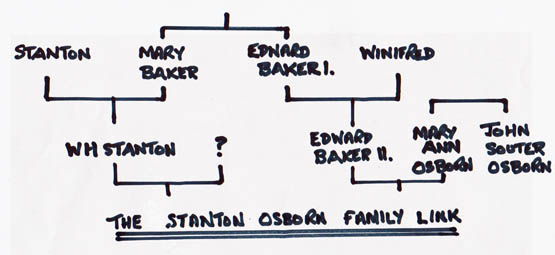
Stanton senior and Mary Baker had William Henry Stanton in 1803. He was born in Deal on the 19th October. Between 1811 and 1817 it is known that he went to Deal Boarding School and so received a commendable education for those times. His departure from school coincided with his father's imprisonment for smuggling suggesting that the funds ran out to pay for the schooling. W H Standon made his first voyage aged 14/15 after leaving school. Thereafter he pursued a maritime career qualifying as a Pilot in due course. His book details his maritime exploits in particular his involvement with "wrecking", salvaging distressed boats and their cargo at sea which could be very lucrative. W H Stanton had a son by a lady at present unidentified. 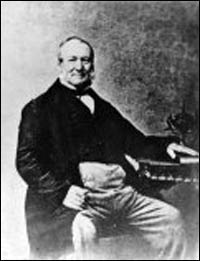 Left: William Henry Stanton
Left: William Henry Stanton
Extract from: The Deal Boatmen - Heroes or Villains? Dr.Jacqueline Bower In the eighteenth century, Deal was probably the most notorious smuggling town in England. Government action ended large scale smuggling after 1815, but small scale smuggling, chiefly of spirits and tobacco, continued at Deal throughout the nineteenth century, to the extent that the Collector of Customs there believed that 'scarcely a boatman lands without a pound or more of tobacco concealed about his person.' William H Stanton, a boatman who later qualified as a Cinque Ports Pilot, made 'several good voyages' in 1827, bringing in tea, silk and ribbons. He apparently had no qualms about the illegality of his activities, but worried about the number of people who knew of his voyages. 'I could not do it without employing a great number of people, and you cannot stop people's tongues, and after a few voyages you are at the mercy of so many, that the risk increased tenfold with every voyage.' Finally, Stanton's boat, with contraband on board, was seized by the Customs, acting, he believed, on definite information. Fortunately for Stanton, none of the Customs men involved could swear that he had been in the boat, so although the cargo was confiscated, he escaped prosecution and the boat was returned to him. The contraband, on this occasion satin ribbon, was auctioned by the Customs for 1700 pounds. Stanton's 'several good voyages' therefore might have made him between 5000 and 10,000 pounds. An idea of the workings of the wreckers on the Goodwin Sands can be obtained from the activities of Augustus W N Pugin (1812 - 1852) This revered architect was famous for his Gothic Revival Style. His works included the Palace of Westminster. He settled in Ramsgate where he designed not only a residence for himself but also surrounded it with an extensive complex of Catholic buildings. His house, known as The Grange included a substantial tower that overlooked the coast. The tower included a flat roof surrounded by castellation's. Here Pugin loved to stand with his telescope watching the shipping pass through the treacherous Goodwin Sands. If a ship was seen in distress Pugin would apparently rush down the stairs and out along an underground tunnel beneath the garden to his lugger on the foreshore. This enabled him to be of assistance to the seamen in distress but also enabled him to derive some useful income from the salvage rights! 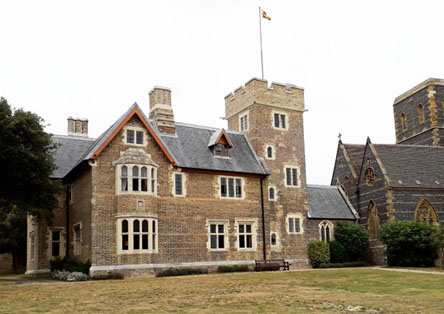
Pugin's house and tower at Ramsgate, a useful observation point for wreckers keeping a watch on shipping and the Goodwin Sands; overlooking the sea from the cliff top. Website: Click Here ADDITIONAL INFORMATION  Mr. Stanton Mary Baker UnknownDESTINY CATEGORY 19th CENTURY first half, Historical summary, PEOPLE, Smuggling LANDSCAPE Rural REGION England - Southern |
||||||||||||||||||||||||||||



